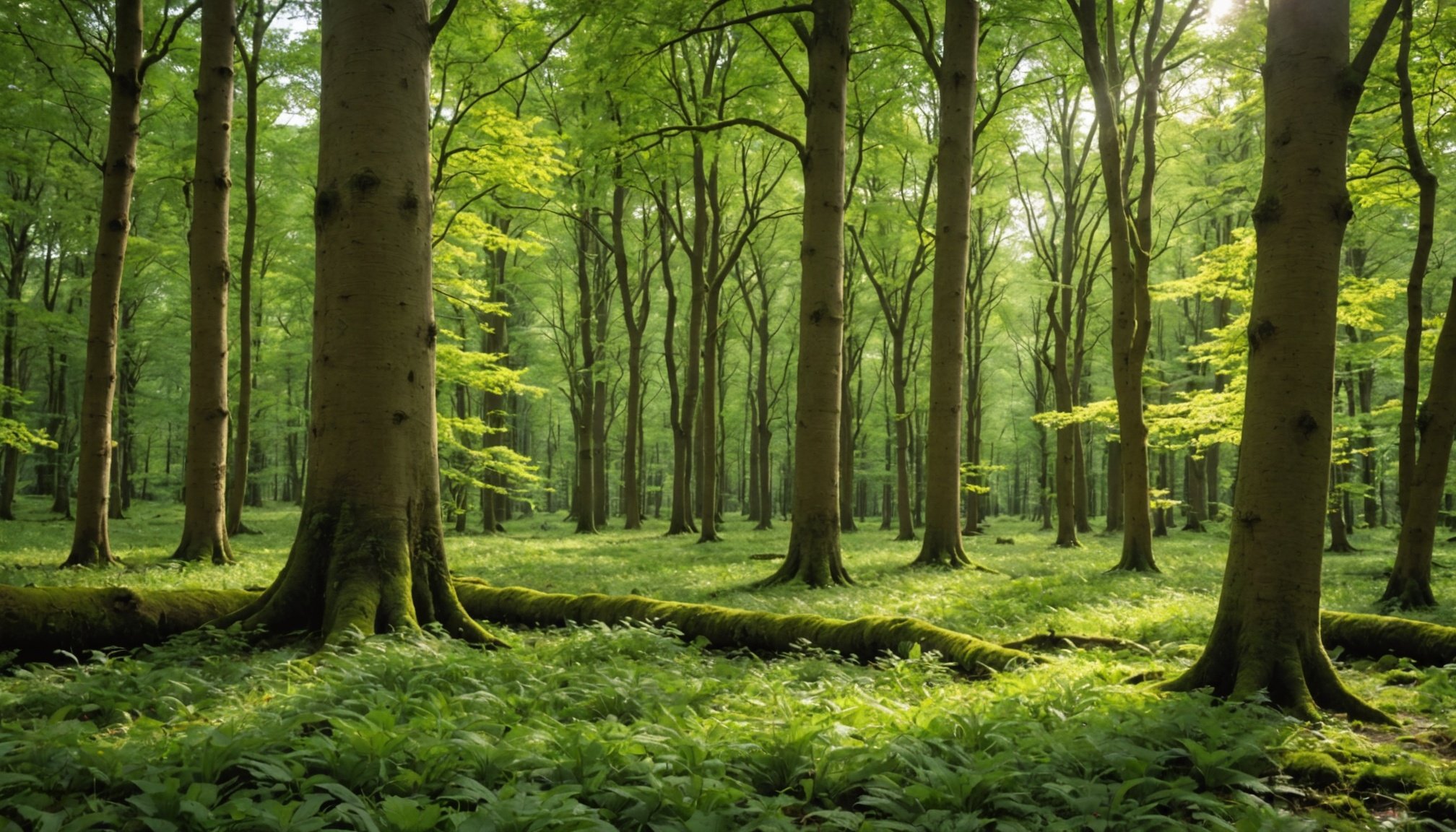Importance of Protecting Historic Woodlands
Preserving historic woodlands is critical due to their ecological significance and their role in sustaining biodiversity. These ancient ecosystems are home to countless species, many of which rely solely on these habitats. The distinct flora and fauna found within historic woodlands contribute to the richness of life and are vital for maintaining genetic diversity. As biodiversity hubs, these woodlands support intricate food webs, sustaining wildlife populations and aiding ecosystem stability.
Beyond their ecological role, historic woodlands provide substantial ecosystem services. These include carbon sequestration, which helps mitigate climate change, and water regulation, reducing flood risks. The economic benefits derived from conservation of these woodlands are notable through tourism and recreation, providing local economies with a financial boost. Societally, they offer spaces for education and leisure, enhancing community well-being.
This might interest you : Guardians of the sea: the uk”s innovative efforts to safeguard seabirds from plastic pollution
Furthermore, the conservation of historic woodlands aligns with global sustainability goals, promoting environmental stewardship. They act as living archives, showcasing historical land management practices, and serving as benchmarks for restoration efforts. Preserving these landscapes ensures that future generations continue to benefit from their beauty and bounty. Recognising woodlands’ value is paramount in conserving our natural heritage, fostering partnerships, and implementing effective conservation strategies.
Strategies for Woodland Protection
The protection of historic woodlands involves implementing effective woodland conservation strategies. Among these, sustainable forestry practices are crucial, focusing on methods that allow for responsible timber harvesting without compromising forest health. This involves maintaining forest cover, promoting biodiversity, and ensuring the health of woodland ecosystems. Certification and eco-labeling are essential in verifying the sustainability of forestry operations, helping consumers make informed choices.
Also read : Ultimate nutrition guide for uk pet owners: caring for rescued hedgehogs to promote their best health
Sustainable Forestry Practices
Sustainable forestry ensures that timber harvesting is conducted responsibly. By adopting eco-friendly methods, forest cover is preserved while maintaining ecosystem balance. Certifications such as those from the Forest Stewardship Council offer a stamp of approval for responsibly sourced wood, fostering consumer confidence.
Habitat Restoration Initiatives
Restoration projects breathe life back into degraded woodlands. Successful projects, such as those in the UK, have used techniques like selective planting and soil regeneration. Engaging local communities in these initiatives not only enhances their success but also strengthens community ties to environmental stewardship.
Legislative and Policy Framework
The UK’s legislative landscape supports woodland conservation through various laws and policies. The Forestry Commission plays a key role, alongside local authorities, in enforcing these regulations. International agreements further bolster these efforts, ensuring a united approach to woodland preservation.
Key Organizations in Woodland Conservation
Several conservation organizations, such as the Woodland Trust and the Royal Society for the Protection of Birds (RSPB), play pivotal roles in preserving historic woodlands. These national organizations have established successful conservation programs aimed at protecting and restoring woodland habitats. The Woodland Trust, for instance, manages over 1,000 sites throughout the UK, implementing strategic initiatives to safeguard vital woodland ecosystems. Similarly, the RSPB focuses on integrating woodland conservation with broader biodiversity goals, ensuring that these precious habitats continue to thrive.
Collaboration among these focal organizations often leads to larger-scale initiatives that significantly impact woodland conservation efforts. By pooling resources, expertise, and public support, they enhance the effectiveness of conservation strategies.
Local community groups complement these national efforts by providing valuable grassroots support. The importance of community participation cannot be overstated, as it fosters a sense of ownership and understanding of local ecosystems. Successful case studies, like the Friends of Trees initiatives, demonstrate how local knowledge and passion can lead to effective management and conservation outcomes. Ultimately, these collaborations between national bodies and local entities are essential for the conservation of historic woodlands, setting a precedent for future environmental preservation efforts.
Challenges to Woodland Conservation
Historic woodlands face multiple challenges that threaten their preservation. Urbanization and climate change are major threats impacting these critical habitats. As urban areas expand, land previously occupied by woodlands is repurposed for development, leading to habitat loss. Additionally, climate change alters temperature and precipitation patterns, stressing ecosystems historically adapted to stable conditions.
Invasive species further complicate conservation efforts. These species often lack natural predators and can outcompete native flora and fauna, destabilizing biodiversity. For instance, species like Rhododendron have proliferated in some woodlands, inhibiting native plant growth and altering the ecological balance.
Land use conflicts represent another significant challenge, often pitting conservation goals against development pressures. The desire to protect ancient woodlands must be balanced with economic development demands, such as infrastructure projects or agricultural expansion. These conflicts require thoughtful negotiation and innovative policy solutions to reconcile conservation and development.
The complexity of these threats necessitates a multifaceted approach to conservation, combining legal frameworks, public participation, and scientific research. By addressing these pressures holistically, we can strive to protect these invaluable resources for future generations, ensuring that they continue to provide ecological, economic, and social benefits.
Community Involvement and Education
Community involvement is vital for the effective conservation of historic woodlands. Engaging local residents fosters a deeper connection to the environment, making protection efforts more sustainable. Environmental education plays a crucial role in this engagement. Initiatives aimed at informing the public about the importance of woodlands are essential, empowering individuals to participate in conservation efforts.
Educational Programs
Educational programs are designed to raise awareness about the ecological significance of biodiversity in historic woodlands. Schools and other educational institutions are pivotal in highlighting these themes. They help cultivate a new generation of informed citizens who value and participate in conservation activities. By promoting citizen science projects, community members are encouraged to contribute to scientific research, enriching their understanding of local ecosystems.
Volunteer Opportunities
Volunteer opportunities offer community engagement in woodland management. These programs, often organized by conservation organizations, provide hands-on experience in preserving and enhancing natural landscapes. By engaging in such activities, individuals not only help protect these habitats but also gain skills and a deeper appreciation for nature. Successful volunteer stories show how community-led initiatives lead tangible positive impacts on woodland ecosystems, strengthening long-term conservation objectives.
Future of Historic Woodland Conservation
As we look towards the future of historic woodland conservation, emerging technologies are transforming strategies and methods. Innovations like drones and Geographic Information Systems (GIS) are increasingly employed to monitor and manage woodland health. Such technologies allow for precise mapping and data collection, enhancing the efficiency of restoration projects.
Emerging Technologies
- Drones: Used for aerial surveys, drones provide detailed imagery and insights into tree health and canopy cover without the need for intrusive manual inspection.
- GIS: This tool aids in creating precise maps of woodland areas, tracking changes over time, and identifying priority zones for conservation efforts.
These technological advancements not only improve data accuracy but also make conservation more accessible and scalable.
Trends in Conservation Practices
The introduction of restoration technology is shaping new trends in conservation practices. Automated planting systems and bioengineering offer innovative ways to restore degraded habitats efficiently. As these practices evolve, the potential for large-scale conservation outcomes grows.
Importance of Ongoing Research
Research remains critical to adapt to emerging challenges, such as climate change and habitat fragmentation. Continuous study and adaptation ensure that conservation methods remain relevant and effective, securing the future of our historic woodlands.










